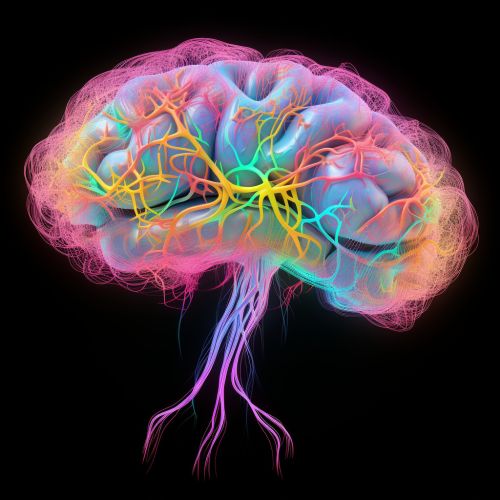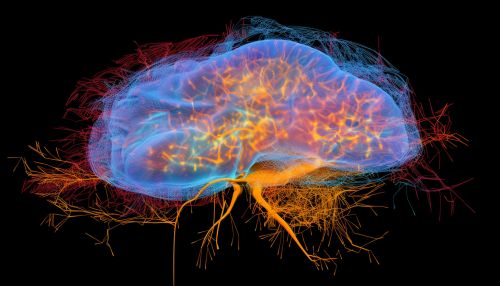Cognitive Mechanisms of Cognitive and Spatial Processing
Introduction
Cognitive and spatial processing are two fundamental aspects of human cognition, playing a critical role in how we perceive, understand, and interact with the world. Cognitive processing refers to the mental processes that our brains use to take in, interpret, and respond to information, including perception, attention, memory, and problem-solving. Cognitive processing is a broad term that encompasses a range of different mental processes, each of which plays a role in our overall cognitive function.
Spatial processing, on the other hand, refers specifically to the cognitive processes that allow us to understand and navigate the physical space around us. This includes our ability to perceive and interpret spatial relationships, to orient ourselves in space, and to navigate from one location to another. Both cognitive and spatial processing are complex, multi-faceted processes that involve multiple areas of the brain and rely on a range of different cognitive mechanisms.
Cognitive Mechanisms of Cognitive Processing
Cognitive processing relies on a range of different cognitive mechanisms, each of which plays a role in how we perceive, interpret, and respond to information. These mechanisms include perception, attention, memory, and problem-solving, among others.
Perception
Perception is the process by which our brains interpret sensory information from the environment. This involves the conversion of raw sensory data into meaningful information that we can understand and respond to. Perception is a complex process that involves multiple stages, from the initial detection of sensory stimuli to the interpretation of this information in the context of our previous experiences and knowledge.
Attention
Attention is the cognitive mechanism that allows us to focus our cognitive resources on specific information or tasks, while ignoring irrelevant or distracting information. Attention plays a critical role in cognitive processing, as it determines which information we process and how deeply we process it. Attention can be selective, focusing on specific stimuli to the exclusion of others, or divided, allowing us to process multiple sources of information simultaneously.
Memory
Memory is the cognitive mechanism that allows us to store and retrieve information over time. Memory plays a critical role in cognitive processing, as it provides the basis for our knowledge and understanding of the world. Memory can be divided into several different types, including sensory memory, short-term memory, and long-term memory, each of which plays a different role in cognitive processing.
Problem-Solving
Problem-solving is the cognitive mechanism that allows us to identify and overcome challenges or obstacles. Problem-solving involves a range of different cognitive processes, including perception, attention, memory, and reasoning, and is often seen as a higher-level cognitive process that relies on and integrates these other processes.
Cognitive Mechanisms of Spatial Processing
Spatial processing, like cognitive processing, relies on a range of different cognitive mechanisms. These include spatial perception, spatial attention, spatial memory, and spatial reasoning, among others.
Spatial Perception
Spatial perception is the process by which we perceive and interpret spatial relationships in the environment. This includes our ability to perceive the size, shape, and position of objects, as well as their relative distances and directions. Spatial perception is a complex process that involves multiple areas of the brain and relies on a range of different cognitive mechanisms.
Spatial Attention
Spatial attention is the cognitive mechanism that allows us to focus our cognitive resources on specific spatial information or tasks. Spatial attention plays a critical role in spatial processing, as it determines which spatial information we process and how deeply we process it. Like attention in general, spatial attention can be selective, focusing on specific spatial stimuli to the exclusion of others, or divided, allowing us to process multiple sources of spatial information simultaneously.
Spatial Memory
Spatial memory is the cognitive mechanism that allows us to store and retrieve spatial information over time. This includes our ability to remember the locations of objects, places, and routes, as well as the spatial relationships between them. Spatial memory plays a critical role in spatial processing, as it provides the basis for our understanding and navigation of the physical space around us.
Spatial Reasoning
Spatial reasoning is the cognitive mechanism that allows us to understand and manipulate spatial relationships. This includes our ability to orient ourselves in space, to navigate from one location to another, and to solve spatial problems. Like problem-solving in general, spatial reasoning is often seen as a higher-level cognitive process that relies on and integrates other spatial processes.
Interactions Between Cognitive and Spatial Processing
While cognitive and spatial processing are often discussed separately, they are closely interconnected and interact in many ways. For example, our ability to navigate the physical space around us relies not only on spatial processes like spatial perception, attention, and memory, but also on cognitive processes like perception, attention, memory, and problem-solving.
In addition, cognitive and spatial processing often influence each other. For example, our perception and attention can be influenced by the spatial layout of the environment, while our spatial memory and reasoning can be influenced by our cognitive understanding of the world.


Conclusion
Cognitive and spatial processing are two fundamental aspects of human cognition, playing a critical role in how we perceive, understand, and interact with the world. Both processes rely on a range of different cognitive mechanisms, from perception and attention to memory and problem-solving, and both are influenced by a range of different factors, from the physical layout of the environment to our previous experiences and knowledge. By understanding these processes and the mechanisms that underlie them, we can gain a deeper understanding of human cognition and the ways in which we interact with the world.
